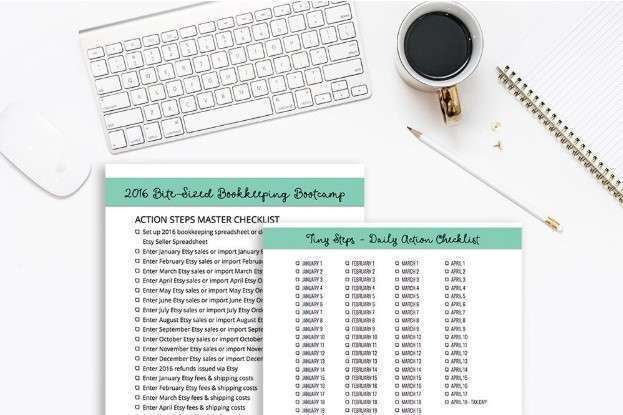
As experienced tax accountants, we’ll also make sure you’re filing your taxes properly and taking advantage of all applicable tax breaks. Small changes in the tax code can have a significant impact on your profits. We understand how these regulations are applied to businesses in your industry and can handle all your sales tax, California State tax, and Federal tax reporting requirements. While many small business owners may employ an accountant, not all are able to afford that luxury.
Plumb Outsourced Accounting Services

The intricacies of fuel sales, inventory management, and vendor transactions demand a deep understanding of the industry’s unique financial dynamics. Outsourcing bookkeeping services ensures access to professionals well-versed in these complexities. Their expertise gas station accounting guarantees accurate and compliant financial records, preventing costly errors, and keeping you on the right side of tax regulations. This specialized knowledge allows you to navigate the financial intricacies of your gas station business with confidence.
Petrosoft SmartPOS Hardware Costs
Our unbiased reviews and content are supported in part by affiliate partnerships, and we adhere to strict guidelines to preserve editorial integrity. The editorial content on this page is not provided by any of the companies mentioned and has not been reviewed, approved or otherwise endorsed by any of these entities. You will receive a custom payment processing quote when you contact a representative. Also, some features are optional paid “modules,” so make sure you’re paying only for what you need. LS Retail offers custom subscription lengths, which you will discuss with a representative. LS Retail partners with payment processing providers such as Verifone, Worldpay, and PayEx.

Fuel Cost of Sales
CStoreOffice® provides the infrastructure, workflow and reporting needed to increase operational efficiencies and optimize margins of your convenience store or gas station. Hi Bvg1, I know how important it’s to properly set up your file when transitioning from one version of the program to the other. Here at the Community, we’re dedicated to providing you the best technical support to explain the functions of the software. When it comes to how to manage your books or which industry type to choose for your business needs, your accountant is the best resource for more information and proper guidance. For that matter, I strongly encourage you to reach out to an accountant or to use the link shared above by my colleague in case you don’t have one.
Remote Books Online gets your bookkeeping completed and financial statements ready for filing taxes. All feedback, positive or negative, helps us to improve the way we help small businesses. With Helcim, you get everything you need to accept credit card payments, plus high-quality support from real humans. For most small business owners, POS system selection is going to come down to the price. NCR offers a host of proprietary POS terminals, self-serve kiosks, kitchen display systems, and the NCR Optic, which retrofits into your existing pump system.
Everyone knows you must regularly record and report sales and taxes, however accounting software is designed for more than just that. Ultimately, it is up to the business owner or finance team to decide which expense category is most appropriate for gas expenses. There is no right or wrong answer, but it is important to be consistent in how business expenses are classified in order to maintain accurate financial records. Using a separate business credit card for gas is another way to simplify tracking your gas expenses.
You can analyze stock movement periodically to perfect your reordering levels. This is an excellent feature to help convenience store owners with diverse stock sets keep their shelves stocked without overflow. Additionally, Verifone integrates with several third-party software providers.
- Access to real-time financial insights is crucial for making informed decisions in your gas station business.
- You can use CStoreOffice® to manage BOLs, invoices, orders, track sales, margins, tank data for SIR and other operational decisions.
- Any errors can lead to discrepancies in inventory, sales, and tax reporting.
- For gas stations, precise financial record-keeping and compliance are paramount.
- Professional bookkeeping service providers implement robust security measures to safeguard your data against potential breaches and cyberattacks.
- Centralize the administration of your price book from within CStoreOffice®.
- You’ll be able to track your income and expenses, make sure you’re paying the right amount of tax, and generally get a better overview of your financial situation.
- QuickBooks Online makes it easy to add to or edit your chart of accounts and I’ll point you in the right direction for getting this taken care of.
- You may integrate your hardware and software with compatible fuel controllers, automatic tank gauges, and more from Wayne Fueling Systems, Gilbarco, and Verifone.
- Zoho Books is a very reputable and reliable cloud-based accounting software for small, medium, and large-scale businesses.
They also facilitate timely tax submissions, keeping you in adherence to the ever-changing tax laws and regulations. This meticulous approach helps you avoid costly mistakes and fosters peace of mind, knowing your finances are in capable hands. It entails expenses like staff salaries, training, accounting software, hardware, and office space.
- The primary source of carbon dioxide emissions is the combustion of fossil fuels for energy.
- However, if you’re looking for something that’s more geared towards small businesses, then AccountEdge might be a better option.
- I cannot emphasize enough the need of keeping company and employee spending separate.
- Xero is a cloud-based accounting software platform for small and medium-sized businesses.
- Remote Books Online’s web service means we don’t have to be local to provide you with unmatched service and response.
- The company offers registers, fuel site controllers, self-serve food order kiosks, and credit card terminals.


Comentarios recientes